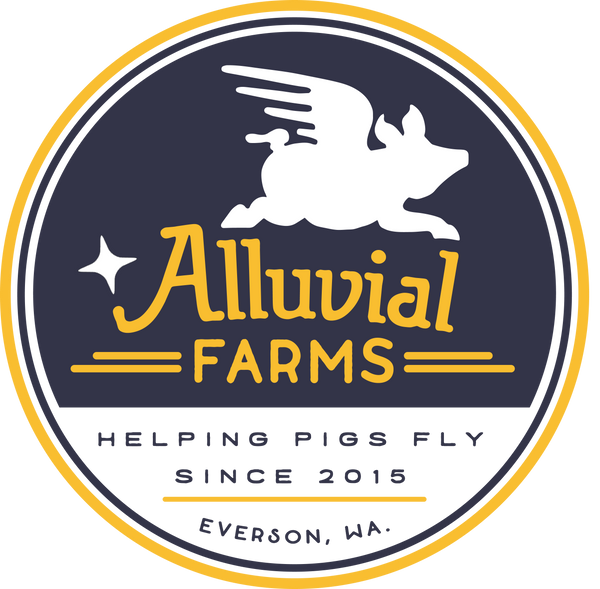
The Golden Elixir of the Kitchen: Cooking with Lard from Pasture-Raised Pork
 In the realm of cooking oils, there's one often-overlooked gem that has been cherished for generations but seems to have fallen out of favor in recent years: lard. When it's derived from the fat of pasture-raised pork, lard is not just a flavorful and versatile cooking medium; it also offers numerous health benefits that might surprise you. In this blog post, we'll explore the wonders of lard and share some delectable ways to incorporate it into your kitchen repertoire.
In the realm of cooking oils, there's one often-overlooked gem that has been cherished for generations but seems to have fallen out of favor in recent years: lard. When it's derived from the fat of pasture-raised pork, lard is not just a flavorful and versatile cooking medium; it also offers numerous health benefits that might surprise you. In this blog post, we'll explore the wonders of lard and share some delectable ways to incorporate it into your kitchen repertoire.

The Health Benefits of Lard from Pasture-Raised Pork:
- Heart-Healthy Monounsaturated Fats:
Contrary to the misconception that all fats are unhealthy, lard from pasture-raised pork is rich in monounsaturated fats, which are considered heart-healthy. These fats can help reduce bad cholesterol levels and lower the risk of heart disease when consumed in moderation.
- Vitamin D:
Lard is a natural source of vitamin D, a nutrient crucial for bone health, immune function, and overall well-being. Pasture-raised pork lard contains higher levels of vitamin D compared to conventionally raised pork, thanks to the animals' exposure to sunlight and natural diets.
- No Trans Fats:
Unlike many commercial cooking oils, lard contains no trans fats, which have been linked to various health issues, including heart disease and inflammation. Cooking with lard provides a trans fat-free alternative that is both delicious and nutritious.
- Stable for High-Temperature Cooking:
One of lard's remarkable attributes is its high smoke point, which makes it perfect for frying, roasting, and baking. It remains stable at high temperatures, preventing the formation of harmful compounds that can occur with other cooking oils.

My top 5 tips for lard storage
We get a lot of questions about how to store lard once you have purchased a jar from Alluvial Farms, or jarred the liquid gold from Alluvial Farms pork fat that you rendered yourself. Here are my top tips:
- Keep the jars of lard in the freezer until you are ready to use for maximum freshness.
- Once you pull it out to use you can keep it in the refrigerator if you don't use it often.
- Or you can keep it on the counter if you use it often so it stays softer and easier to scoop into a pan.
- Microwave the jar for 20-30 seconds to soften it for scooping or mixing. Or more if you want to liquify it to mix into a batter or recipe.
- Use a sanitized utensil for scooping it out to avoid introducing other food or particles in there that could cause mold to grow.

How to Use Lard in Your Kitchen:
- Perfect Pie Crusts:
Lard is the secret behind flaky, tender pie crusts. Replace a portion of your recipe's fat with lard, and watch as your pies turn out golden and delicious.
- Incredible Fried Chicken:
For the crispiest, most flavorful fried chicken, reach for lard. It imparts a rich, savory flavor and ensures a beautiful, crispy exterior.
- Roasting and Sautéing:
Lard adds a subtle, delightful flavor to roasted vegetables, making them a hit at your dinner table. You can also use it for sautéing onions, garlic, and other aromatics to build a flavorful base for soups, stews, and sauces.
- Baking Delights:
Lard is a baking game-changer. Use it in biscuits, muffins, and cookies for a melt-in-your-mouth texture and superior flavor.
- Popcorn Extravaganza:
Believe it or not, lard makes for fantastic popcorn. Use it instead of butter for a unique and delicious movie night treat.
In the world of cooking oils, lard from pasture-raised pork is a hidden treasure that offers both culinary excellence and health benefits. Its rich flavor and versatility in the kitchen make it a must-try for any home cook. Plus, knowing that you're using a product from pasture-raised pork adds a layer of ethical and sustainable satisfaction to your cooking endeavors.
So, embrace the golden elixir of the kitchen, experiment with lard in your recipes, and savor the delightful results. Your taste buds and your health will thank you for it.
